Abstract
1. When a subject attempts to exert a steady pressure on a joystick he makes small unavoidable errors which, irrespective of their origin or frequency, may be called tremor.
2. Frequency analysis shows that low frequencies always contribute much more to the total error than high frequencies. If the subject is not allowed to check his performance visually, but has to rely on sensations of pressure in the finger tips, etc., the error power spectrum plotted on logarithmic co-ordinates approximates to a straight line falling at 6 db/octave from 0·4 to 9 c/s. In other words the amplitude of the tremor component at each frequency is inversely proportional to frequency.
3. When the subject is given a visual indication of his errors on an oscilloscope the shape of the tremor spectrum alters. The most striking change is the appearance of a tremor peak at about 9 c/s, but there is also a significant increase of error in the range 1-4 c/s. The extent of these changes varies from subject to subject.
4. If the 9 c/s peak represents oscillation of a muscle length-servo it would appear that greater use is made of this servo when positional information is available from the eyes than when proprioceptive impulses from the limbs have to be relied on.
Full text
PDF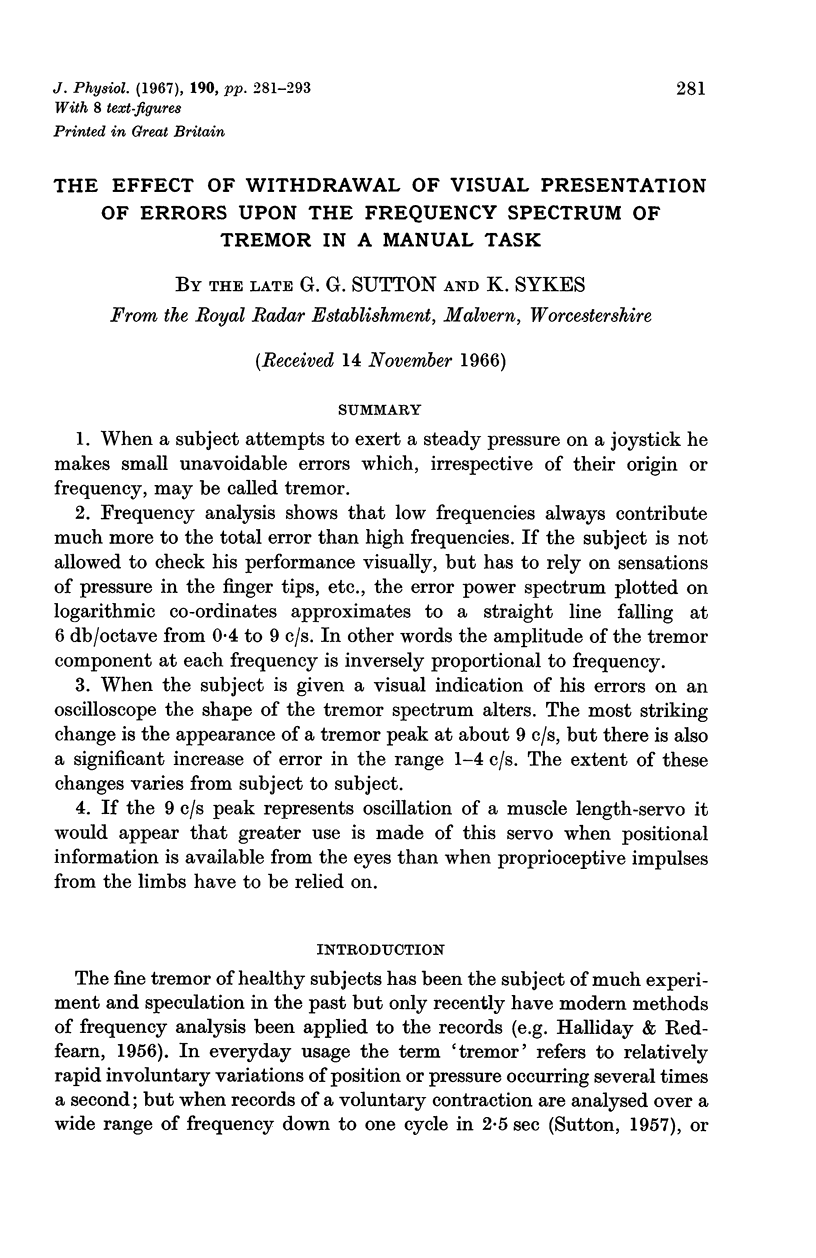
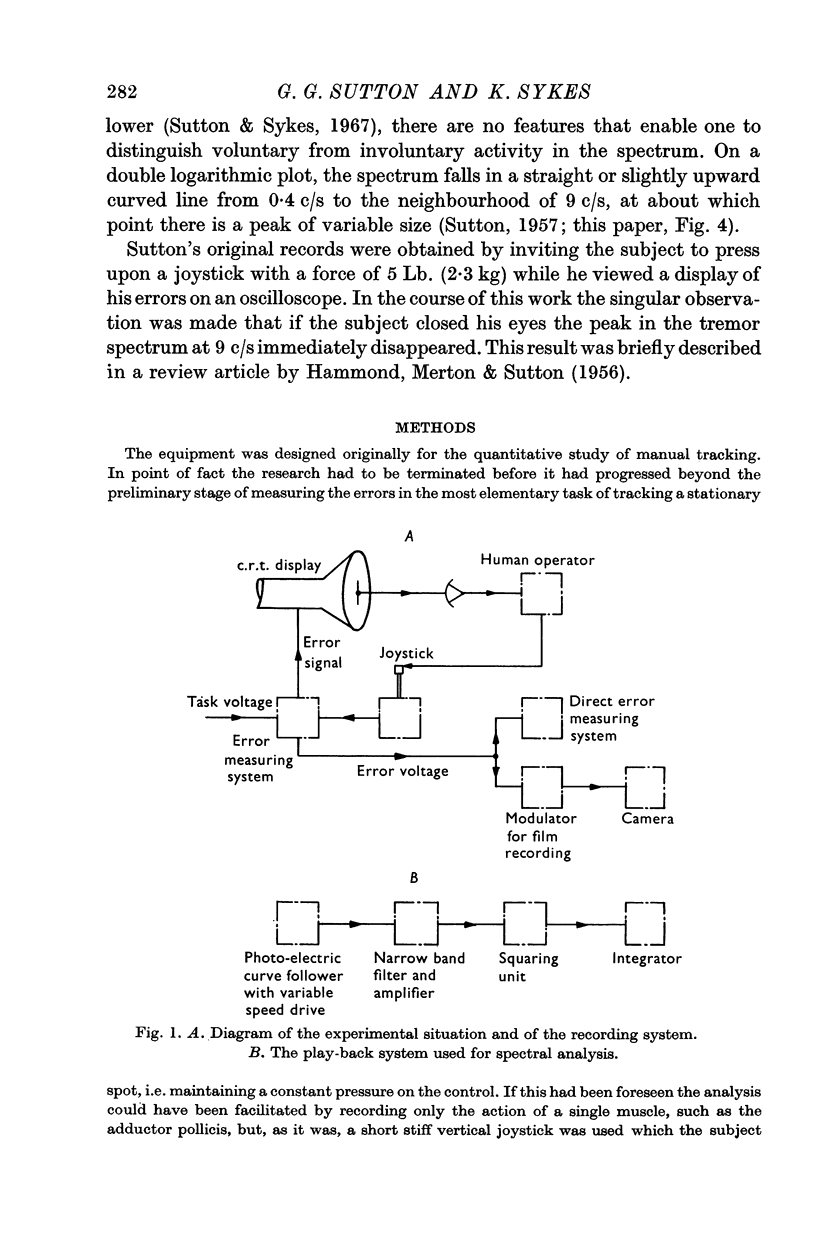

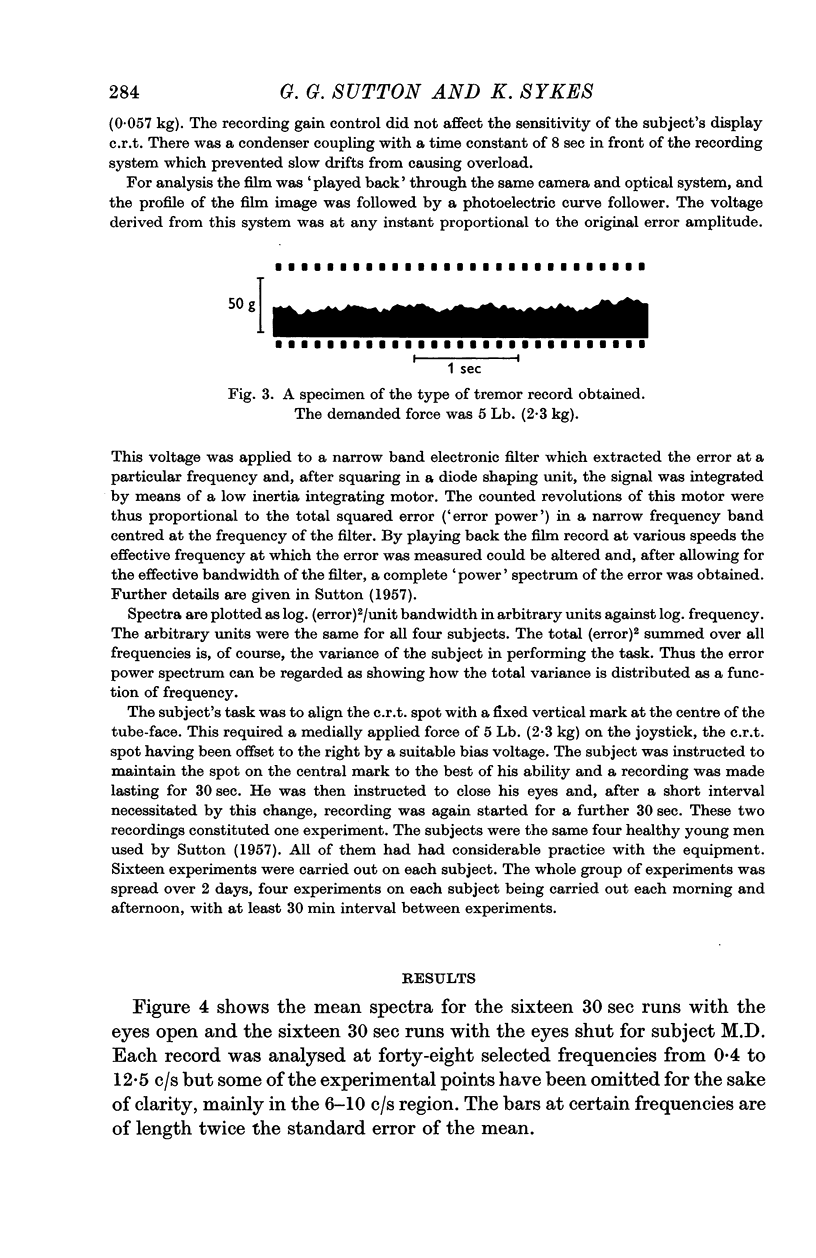
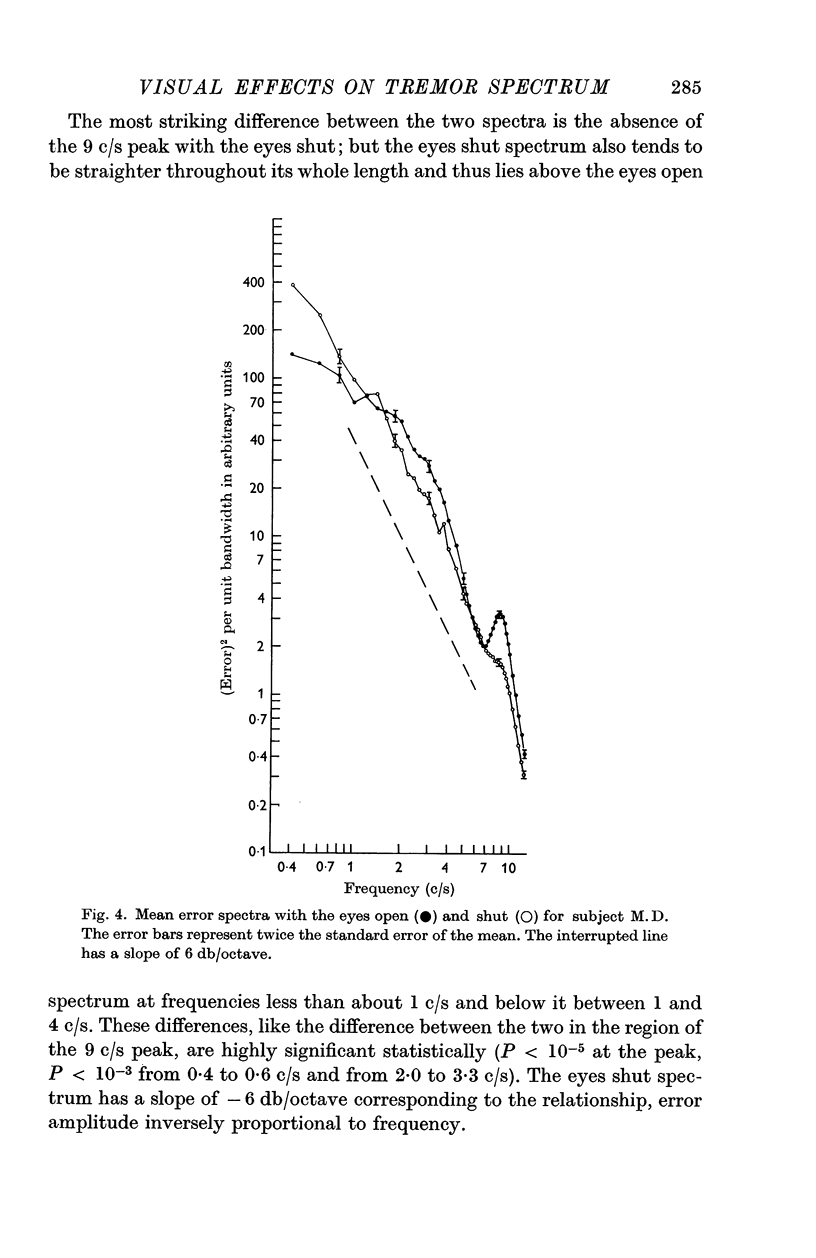
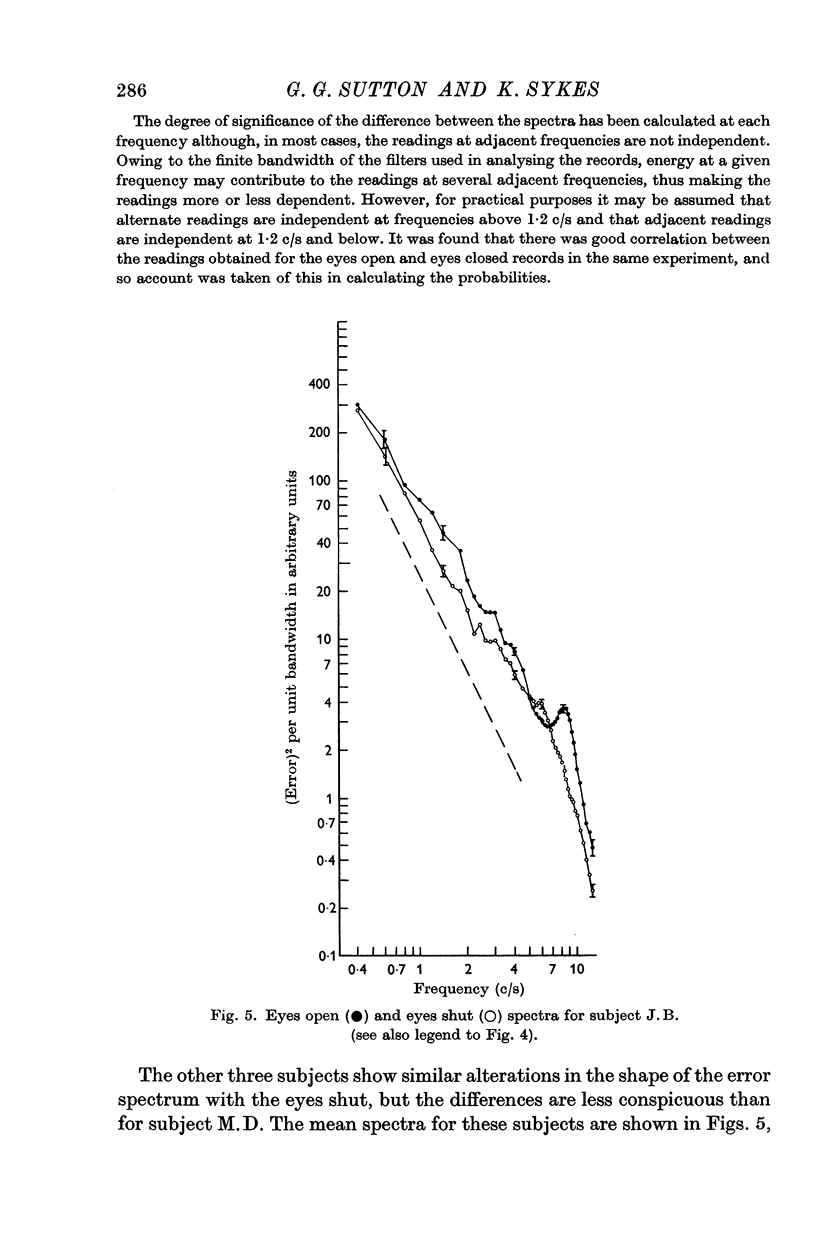
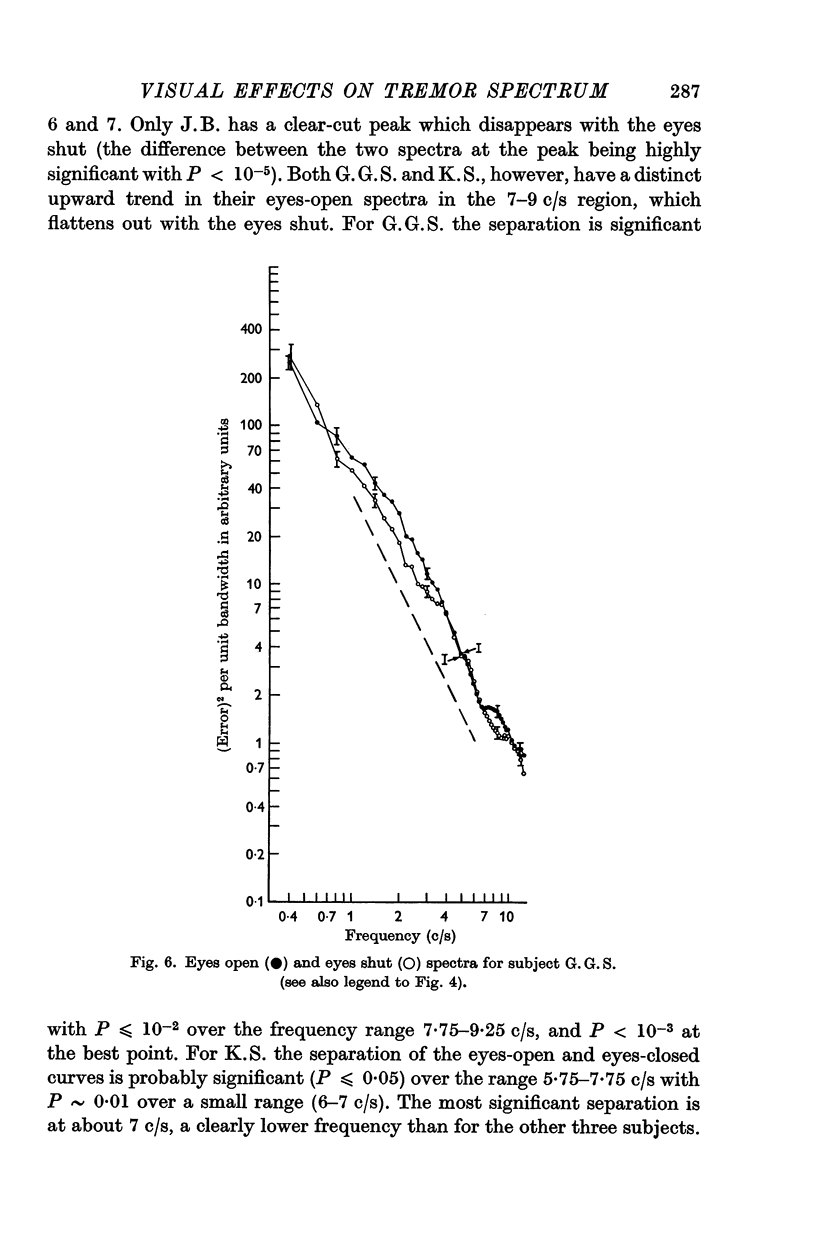
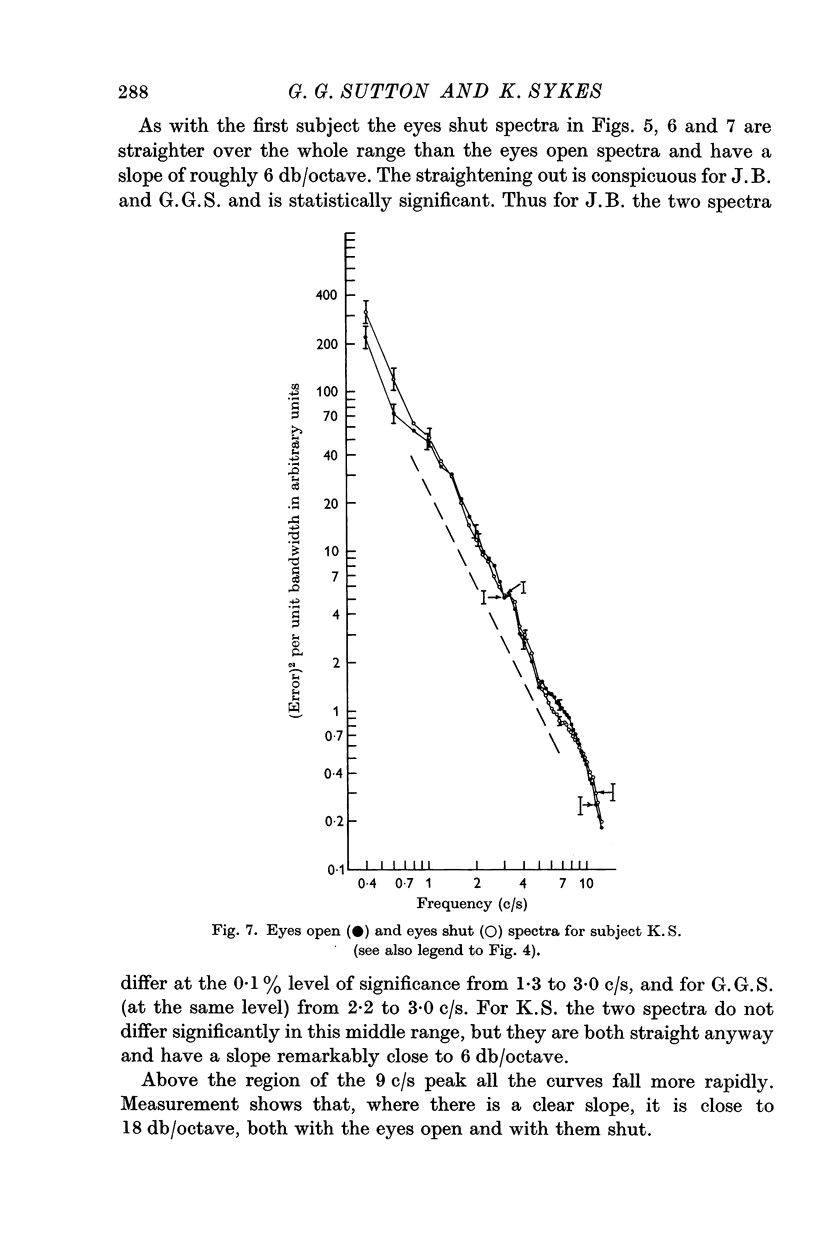
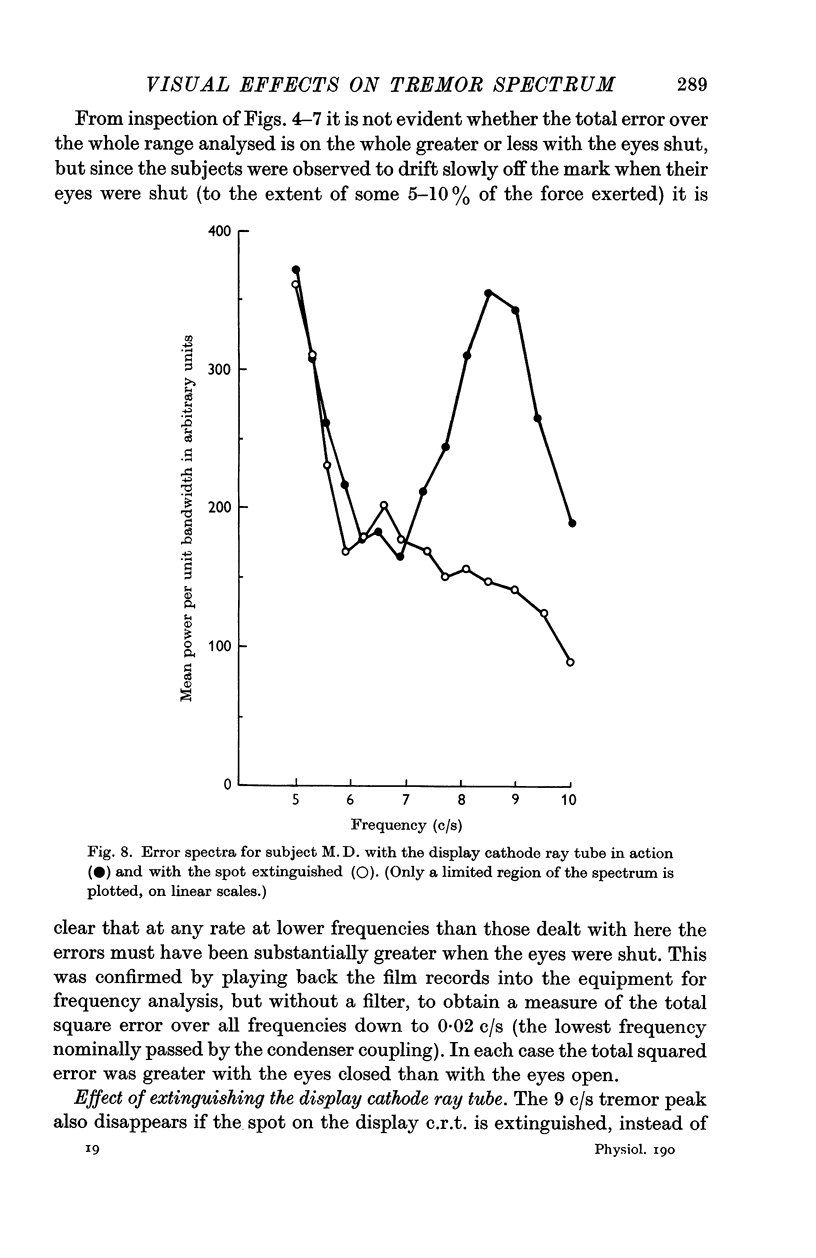
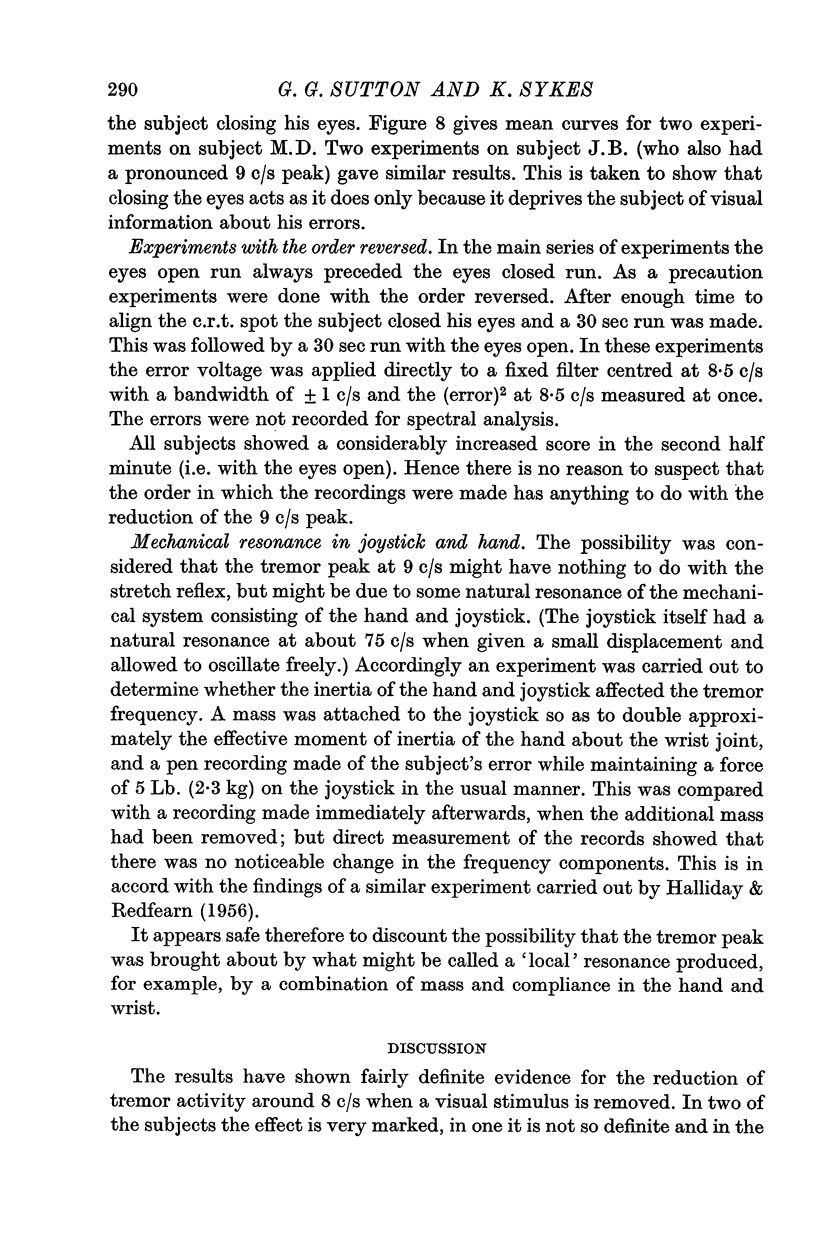
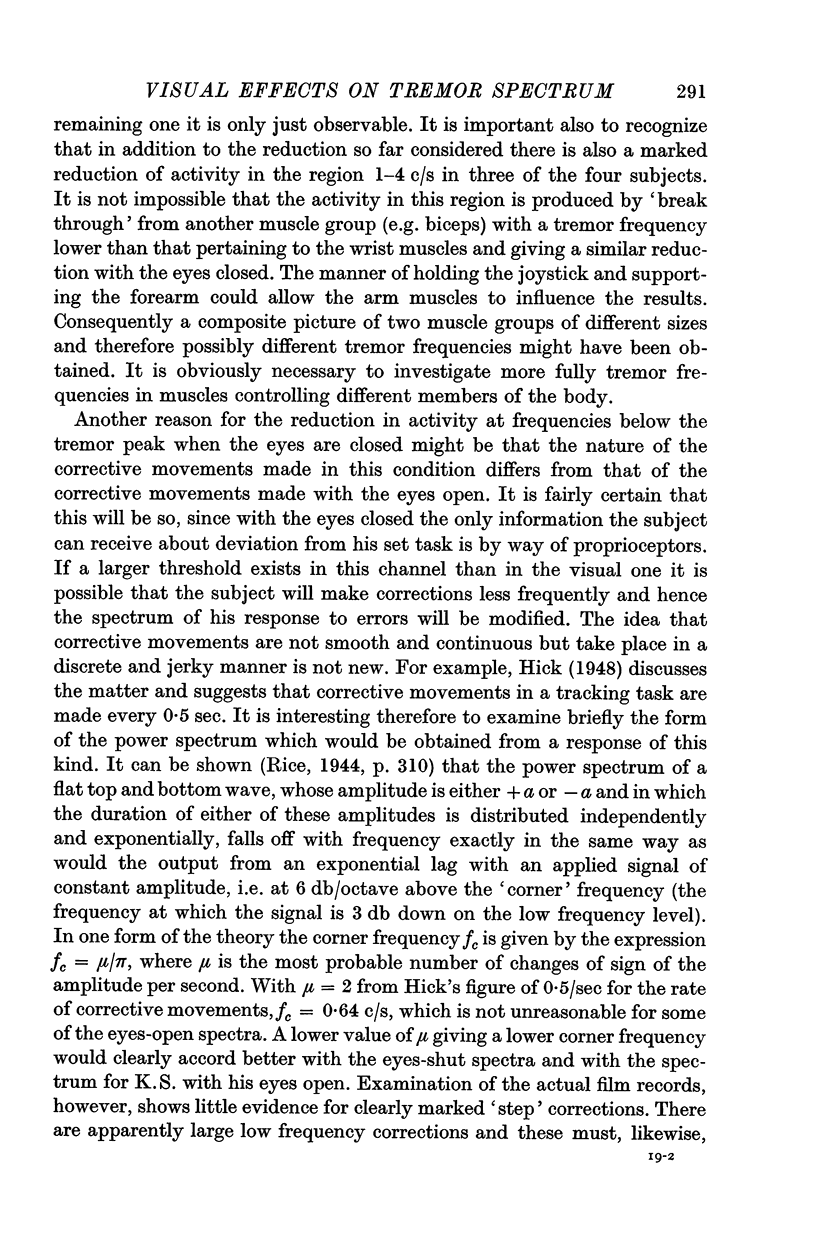


Images in this article
Selected References
These references are in PubMed. This may not be the complete list of references from this article.
- HALLIDAY A. M., REDFEARN J. W. An analysis of the frequencies of finger tremor in healthy subjects. J Physiol. 1956 Dec 28;134(3):600–611. doi: 10.1113/jphysiol.1956.sp005668. [DOI] [PMC free article] [PubMed] [Google Scholar]
- HALLIDAY A. M., REDFEARN J. W. Finger tremor in tabetic patients and its bearing on the mechanism producing the rhythm of physiological tremor. J Neurol Neurosurg Psychiatry. 1958 May;21(2):101–108. doi: 10.1136/jnnp.21.2.101. [DOI] [PMC free article] [PubMed] [Google Scholar]
- HAMMOND P. H., MERTON P. A., SUTTON G. G. Nervous gradation of muscular contraction. Br Med Bull. 1956 Sep;12(3):214–218. doi: 10.1093/oxfordjournals.bmb.a069553. [DOI] [PubMed] [Google Scholar]



